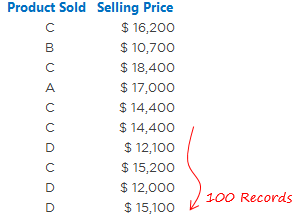5 Ways to Separate Class Intervals in Excel

Effective data analysis in Excel often involves organizing data into manageable class intervals. Whether you're dealing with statistical data or simply organizing numerical values, learning how to separate class intervals can significantly enhance your ability to analyze, visualize, and draw insights from your datasets. Here are five comprehensive methods to achieve this in Microsoft Excel.
1. Using Formulas for Fixed Intervals
The most straightforward method involves creating fixed intervals manually using Excel formulas. Here’s how to do it:
- Decide on your interval width (e.g., 10 for intervals like 0-10, 10-20, etc.).
- Create a new column next to your data, naming it "Interval".
- In the first row of the Interval column, use this formula: =INT(A2/10)*10 & "-" & (INT(A2/10)*10)+10 where A2 is your data cell.
- Drag the formula down to apply it to all data points.
2. Using Data Analysis ToolPak
For a more automated approach, Excel's Data Analysis ToolPak can be used to separate data into class intervals:
- Go to 'File > Options > Add-Ins' and ensure the Analysis ToolPak is enabled.
- From the 'Data' tab, click on 'Data Analysis' and choose 'Histogram'.
- Select your data range and define your bin range (bins are the upper limits of your intervals).
- Output options include charts, which can be very useful for data visualization.

📊 Note: Ensure your data does not contain any blank cells or non-numeric values which could skew your results.
3. PivotTable for Dynamic Intervals
If your data requires dynamic interval grouping, a PivotTable can be an excellent tool:
- Select your data and create a PivotTable.
- Drag your data column to both the Rows and Values areas.
- Right-click on a data point, choose 'Group...', and set your interval size.
- You can then summarize the data within each interval with different calculations like sum, count, or average.
4. Conditional Formatting for Visualization
While not a method to calculate intervals, conditional formatting can visually separate your data into intervals:
- Select your data range.
- Use 'Conditional Formatting' to set rules based on the intervals you want to visualize.
- Apply different colors or formatting to highlight these intervals for quick visual analysis.
5. VLOOKUP and MATCH for Custom Intervals
This method allows for more control over how intervals are defined:
- Create a separate table defining your intervals.
- Use the VLOOKUP or MATCH function to check which interval each data point falls into.
- By using custom formulas like =VLOOKUP(A2,Intervals,1,TRUE)-1 & "-" & VLOOKUP(A2,Intervals,1,TRUE), you can assign intervals dynamically.
The journey through data analysis often requires more than just raw numbers; it demands clear organization and presentation for effective interpretation. By employing these methods in Excel, you can better categorize and analyze your data, turning raw numbers into actionable insights. Whether it's through the simplicity of manual formulas, the power of Excel's built-in tools like the Data Analysis ToolPak and PivotTables, or the nuanced control offered by custom functions, each approach offers unique advantages depending on your dataset and analysis goals.
Can I adjust the interval size after grouping data?
+Yes, you can adjust intervals in a PivotTable by re-grouping. For other methods, you might need to recalculate or manually adjust formulas and rules.
What if my data has outliers?
+Consider using a larger interval size to incorporate outliers or create separate categories for extreme values. Alternatively, use statistical methods to identify and treat outliers before grouping.
How can I export interval data?
+Once intervals are created, you can copy the grouped data into a new worksheet, convert to CSV, or use Excel’s export functions to save the formatted data for further analysis or reporting.
Can these methods work with dates?
+Absolutely! Excel treats dates as numbers, so interval grouping methods apply to dates, although you might need to convert dates to a number format or use custom formulas tailored to dates.
What are the limitations of these methods?
+The main limitations include the accuracy in defining intervals (overlapping or skipping data points), the inability to easily adjust intervals once set, and the computational complexity with very large datasets.
Related Terms:
- frequency distribution table using excel
- create frequency table in excel
- frequency distribution chart in excel
- show frequency distribution in excel
- frequency pivot table excel
- create relative frequency table excel



